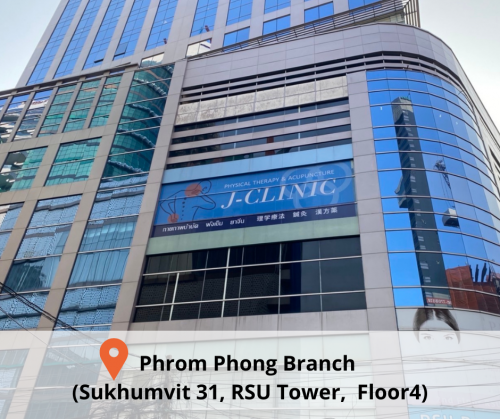Hi, this is Sato from the J-CLINIC in Bangkok.
Today, I’ll talk about common pain experienced by kendo practitioners, using an example case.

However, kendo’s unique moves can strain and lead to pain in the Achilles tendon, knees, shoulders, and hips. For example:
-
Fast movements and strained postures place stress on the bones, joints, muscles, and ligaments.
-
Repetitive movements and excessive use of joints, muscles, and ligaments lead to accumulated fatigue.
-
Direct contact between bodies and bamboo swords causes injuries.
Let’s look at an actual case.
A patient case

Ms. L (28 years old, female) has been training in kendo for three years.
Gradually, pain in more areas began to bother her, and she decided to visit J-CLINIC.
She came to us with the following symptoms:
-
Pain in the right heel
-
Pain from the left Achilles tendon to the sole
-
Pain in the left ankle
These symptoms are typically caused by kendo’s “fumikomi” step.
Roughly translated as “stepping in,” fumikomi is a fast lunge. In this move, Ms. L pushes off with her left leg; her right foot lunges forward, stomping the ground. The right heel receives the full impact of contact with the ground.
This frequent, repetitive stomping was causing the pain in Ms. L’s right heel.


Stepping off from the left leg also was straining the left ankle, triggering pain there.
Given the causes, J-CLINIC treated Ms. L with:
-
Massage to relax muscle tension
-
High-voltage electric therapy for pain relief
-
Motion & manipulation therapy to improve his range of motion
-
Advice on stretching and other exercises
In addition, we showed Ms. L ways to spot-train certain muscles. Specifically, building muscle strength in the leg and soles of her feet would help absorb the strain of rapid weight shifts and address the uneven distribution of weight on her feet.
We also suggested that Ms. L review her fumikomi form, so she can shift her weight without placing the whole burden on the left leg.
Besides treatment, J-CLINIC offers taping services to prevent knee and ankle injuries common to kendo.
Contact us for treatment of injuries, maintenance therapy, and optimizing your body for practice and competitions.
📞For Booking
- Phrom Phong: 097-257-3577
- Thonglor: 084-424-1299
- Ekkamai: 097-245-7863
Our branches in Sukhumvit road
- Phrom Phong Branch (Sukhumvit 31, RSU Tower Floor4)

From BTS Phrom Phong Station, take Exit 5 and walk along Sukhumvit towards Asoke for about 5 minutes. RSU Tower will be on your right. Take the escalator up to Floor 4 and you will see us right in front of you. If you are coming by car, parking is available at RSU Tower and is free up to 2 hours when you are treated at J-CLINIC. - Thonglor Branch (Soi Thonglor 13, Home Place building Basement Level)

Our Thonglor clinic is on the basement level of Home Place Building, at the corner of Sukhumvit Soi 55 and Thonglor Soi 13.
If you are coming by BTS, please take a taxi from BTS Thonglor Station, Exit 3.
If you are coming by car, parking is available at Home Place Building and is free up to 4 hours when you are treated at J-CLINIC. - Ekkamai Branch (Sukhumvit 42, Bangkok Mediplex Floor 3)

Bangkok Mediplex is a general medical mall on Sukhumvit Soi 42, across from Gateway Ekkamai and directly connected to BTS Ekkamai Station. J-CLINIC Ekkamai branch will be on the 3rd floor of Mediplex.
If you come from BTS Ekkamai Station, go through exit 2. It connects directly to Bangkok Mediplex. Take the escalator up to the 3rd floor and you will see our clinic on your right.
